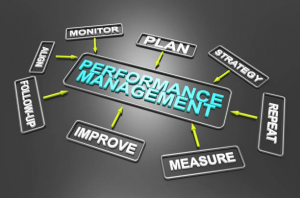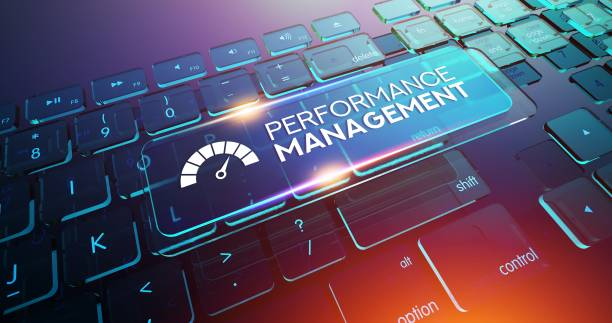Introduction.
Performance management can be defined as a business tool that helps the manager to monitor and evaluate employee performance. Its main goal is to create an environment that enables employees to work effectively and put in the best of their ability in other to produce quality work. It is the process by which the managers or supervisors of an organization ensure that the planned activities and target of an organization outputs meet the organization goals in an effective and efficient manner. It is also an effective way to measure employee performance.
Effective performance management is very crucial to the overall growth of a business, either in the formal or informal process. Effective and well-planned performance management help in aligning the employees, resources and the whole system to meet their strategic objectives.

Effective and timely feedback is an important component of an effective performance management program; and when used in combination with setting performance goals and targets, it helps the employees on their progress toward achieving their goals.
A formal performance management program helps managers and employees to meet and have conversations and debates around the organization’s goals, career progress, and how the individual employees work aligns with the company and its overall vision and mission. It strives to improve the standard of overall performance of the organisation that may have been adjudged unachievable.
Traditional tools like measurement and goal setting are used by performance management programs and also define the actual performance and develop methods for measuring the performance.
An effective performance management program turns every interaction with employees into a learning opportunity instead of the use of a traditional method of year-end review.
Most managers and supervisors regulate workflows, introduce new actions, and make other decisions that will help employees meet their goals and in return, help the company achieve its goals and function at its best by making use of performance management tools.

Principles that will help managers and supervisors in Performance Management:
The following principles can help managers and supervisors in carrying out effective performance management in the organisation.
- Clear Communication: Effective communication is crucial in performance management. Managers need to clearly communicate the goals and expectations to their employees, provide regular feedback, and be open to hearing and addressing any concerns or issues that may arise.
- Goal Setting: Setting clear and achievable goals for employees is a critical aspect of performance management. Goals should be specific, measurable, attainable, relevant, and time-bound (SMART) to ensure that employees understand what is expected of them and can work towards achieving those goals.
- Performance Measurements: Managers must establish clear metrics to measure employee performance against the established goals. This helps to ensure that employees are being evaluated objectively and consistently and that their performance is being accurately captured and documented.
- Training and Development: Managers should provide regular opportunities for training and development to help employees build the skills and knowledge necessary to perform their jobs effectively.
- Consistent Evaluation: Managers should evaluate employee performance consistently, fairly, and objectively, and provide feedback on a regular basis. This helps to ensure that employees receive timely feedback and have a clear understanding of how their performance is being evaluated.
- Addressing Performance Issues: Managers should promptly address any performance issues that arise, providing guidance and support to help employees improve and succeed in their roles.
- Reward and Recognition: Managers should recognise and reward high-performing employees in a timely and meaningful way, as this helps to motivate employees and creates a positive work environment.
Components of performance management systems
When we talk about the key elements of a performance management system, the performance management cycle should be highly considered. With the help of the right software, it will help manage performance at every stage.
- Planning
It is very crucial that the performance management system facilitates important planning activities like Setting and defining employee goals. This will help maintain the organizational bond and gives employees, teams, and managers the opportunity to define an action plan.
In a well-organized and efficient organization, work is planned in advance. Planning means writing down all the expectations and goals of an organization to its employees so that they can focus on achieving them.
- Monitoring
A good performance management system should be able to help track the important metrics and also help monitor employee progress to make sure that employee and team goals are being met. This is crucial to break down barricades and encourage productivity.
- Rating & evaluation
It is crucial that the performance management system contributes to effectively and appropriately evaluating employee performance and the bottom line. The right system facilitates conversations that allow managers to get feedback, understand the employee’s point of view, and create performance plans for the future.

- Compensation & Reward
A good compensation system is key to motivating and retaining talent and making employees more loyal and productive. They can increase and increase the overall productivity and efficiency of the organization. Rewarding simply means giving satisfaction, rewarding and recognizing employees, individuals and team members for their outstanding performance, and recognizing their contribution to the organization’s mission. A good compensation system is key to motivating and retaining talent and making employees more loyal and productive.
- Development
Development here means increasing functionality through training, assignment of tasks that introduce newness or a higher level of responsibility, and improvement of work processes or other methods.it helps employees adapt to changes in the workplace, such as the introduction of new technologies to keep pace.
Various Types of Performance Management Systems
There are several types of performance management systems, including:
- Traditional Performance Management: A system that involves setting goals, conducting performance evaluations, and providing feedback to employees.
- 360-Degree Performance Management: A system that involves collecting feedback from a variety of sources, including managers, peers, subordinates, and customers.
- Goal-Based Performance Management: A system that focuses on setting specific and measurable goals for employees to achieve.
- Continuous Performance Management: A system that emphasizes ongoing feedback and coaching throughout the year, rather than a single annual review.
- Behavior-Based Performance Management: A system that focuses on evaluating and rewarding specific behaviors that contribute to organizational success.
- Outcome-Based Performance Management: A system that evaluates employees based on the results they achieve, rather than the specific actions they take to achieve those results.
- Quality-Based Performance Management: A system that focuses on ensuring that employees meet certain standards of quality in their work.
Why organisations should implement performance management systems
There are several reasons why organisations implement performance management systems:
- To align individual performance with organisational goals: Performance management systems help to clarify the goals and objectives of the organisation and align them with the goals and objectives of individual employees. This ensures that everyone is working towards the same objectives and enables better tracking of progress towards these goals.
- To improve employee performance: Performance management systems provide employees with regular feedback on their performance and help them identify areas for improvement. This can lead to better job satisfaction, motivation, and engagement, which in turn can result in improved employee performance.
- To identify and address performance issues: Performance management systems enable organisations to identify performance issues and take the necessary steps to address them. This can involve providing additional training or resources, setting new goals or targets, or implementing other performance improvement initiatives.
- To reward high performers: Performance management systems provide a framework for recognising and rewarding high performers. This can help to motivate employees and ensure that they feel valued and appreciated for their efforts.
- To ensure compliance with legal requirements: Performance management systems can help organisations comply with legal requirements by ensuring that performance evaluations are fair and objective, and that performance-related decisions are based on merit rather than discrimination.
Tools required for implementing successful performance management systems
Implementing a successful performance management system requires the use of various tools and techniques to ensure that the system is effective and efficient. Some of the essential tools for implementing a successful performance management system include:
- Performance Metrics: Metrics are vital for measuring and assessing employee performance. The metrics help in developing performance standards that guide employee behavior.
- SMART Goals: Goals that are specific, measurable, attainable, relevant, and time-bound help employees understand their expected performance levels.
- Performance Appraisal Forms: Appraisal forms provide comprehensive information about an employee’s performance against measurable performance standards. These forms help managers provide feedback and coaching.
- Performance Development Plans: Development plans assist in the identification of the areas that need improvement and aid in developing the skills and abilities of employees for better performance.
- Performance Improvement Plans: Improvement plans come in handy when an employee is not meeting performance standards. They outline specific steps that will help employees attain the required level of performance.
- Feedback and Communication Tools: Tools for providing feedback and communicating with employees such as one-on-one coaching sessions, regular check-ins, and performance review meetings are critical tools for implementing a successful performance management system.
- Training and Development Programs: Training and development programs are essential for equipping employees with the tools necessary to achieve their goals and improve their performance.
Further to the aforementioned tools, it is very important to reference that accurate documentation is critical in effective performance management system implementation.
Summary
The fact is that performance management is a critical management tool for encouraging employee reward and recognition, boosting employee engagement and Productivity,
creating employee development strategies, allowing for the exchange of feedback and creating clarity around the organisational and individual employee’s visions and goals.
References:
https://www.hrhelpboard.com
https://www.quantumworkplace.com
https://www.clearreview.com/why-performance-management-important/

